#marketing channels
Text
Mastering Your Marketing The 7 Essential Steps for Crafting a Winning Strategy

Introduction
In the dynamic and competitive landscape of business, a well-crafted marketing strategy is crucial for success. It’s more than just coming up with imaginative ideas, it involves a deep understanding of the market, competition, and the preferences of your target audience.
This article will explore the key components of a winning marketing strategy, providing a detailed, step-by-step guide to help you align your strategy with your business goals and objectives. We’ll also highlight the importance of tracking progress and making necessary adjustments to ensure ongoing relevance and effectiveness.
Step 1: Understand the Market and Target Audience
Understanding your market and target audience is the foundation of a successful marketing strategy. This involves extensive research into customer demographics, behavior, and competitive analysis.
Demographic Research
Demographic research entails a thorough analysis of customer characteristics such as age, gender, income, and location. By identifying key demographic factors, you can create a detailed profile of your ideal customer, enabling you to tailor your marketing efforts effectively. Techniques for demographic research include surveys, data analysis from websites and social media, and studying industry reports.
Types of Demographic Research
Age-Based Research
Analyzing data based on different age groups to tailor marketing efforts.
Gender-Based Research
Understanding gender preferences to create targeted campaigns.
Income-Based Research
Analyzing data based on income levels to customize messaging.
Geographical Research
Studying data based on location to identify optimal marketing locations.
Behavioral Study
Understanding customer behavior is crucial for building a successful marketing strategy. Behavioral study involves analyzing how customers interact with a brand, their purchasing habits, and decision-making processes.
Examples of Behavioral Study Methods
Purchase History Analysis
Examining past purchases to tailor marketing efforts.
Website Analytics
Analyzing website traffic, user engagement, and conversion rates.
Social Media Listening
Monitoring social media channels to understand customer sentiments.
Competitor Analysis
Beyond understanding your target audience, it’s essential to analyze the competition. Conducting a SWOT analysis (Strengths, Weaknesses, Opportunities, Threats) and benchmarking against competitors’ products, services, or processes provides valuable insights.
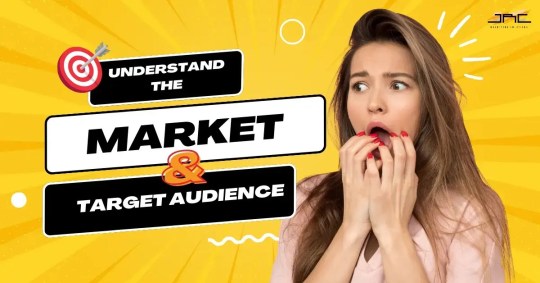
Step 2: Set Measurable Objectives
Once you understand your market and audience, the next step is to set measurable objectives. These objectives should be SMART: Specific, Measurable, Achievable, Relevant, and Time-bound.
Avoid common mistakes, such as setting vague or unrealistic objectives, to ensure your goals guide your marketing tactics effectively.
Breaking Down SMART Objectives
Specific
Clearly defining and articulating the objective.
Measurable
Establishing metrics for tracking and evaluation.
Achievable
Realistic goals within given resources.
Relevant
Aligning with the overall business strategy.
Time-Bound
Having a specific deadline or timeframe for completion.
Step 3: Develop a Messaging Framework
A messaging framework acts as a blueprint for consistent communication with your target audience across all channels. It includes key messages that communicate the unique value proposition of your brand.
Crafting an Effective Messaging Framework
Speak their Language
Tailor messages to resonate with your audience.
Highlight Benefits
Focus on positive outcomes rather than just features.
Consistency is Key
Ensure messages align with overall business strategy.
Step 4: Choose the Right Marketing Channels
Effectively promoting your product or service requires selecting the right marketing channels that resonate with your audience and align with your objectives.
Avoid the common mistake of spreading too thin across channels. Focus on the most effective ones for your target audience and goals.
Considerations for Choosing Marketing Channels
Know Your Audience
Understand where your audience spends time online.
Align with Objectives
Different channels suit different marketing objectives.
Budget and Resources
Choose channels feasible within your budget.
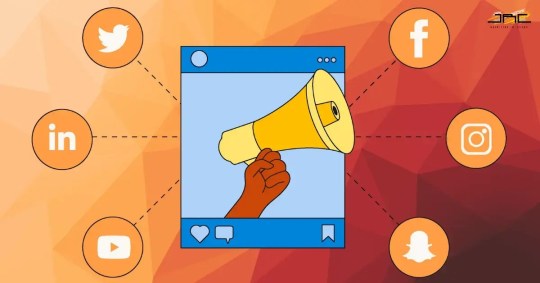
Step 5: Develop a Content Strategy
In today’s digital age, content is a cornerstone of any marketing strategy. A robust content strategy involves creating and distributing high-quality content to attract and engage your target audience.
Common mistakes include prioritizing quantity over quality and neglecting search engine optimization. Quality content builds trust and establishes your brand as a thought leader.
Building an Effective Content Strategy
Understand Audience Needs
Identify topics that resonate with your audience.
Choose Effective Formats
Tailor content formats to audience preferences.
Select Distribution Channels
Choose platforms where your audience is most active.
Step 6: Measure and Adjust
Creating a successful marketing strategy is an ongoing process that requires continuous monitoring and evaluation.
By tracking KPIs and analyzing data, you can identify effective tactics, make adjustments, and optimize future efforts.
Utilizing Key Performance Indicators (KPIs)
Website Traffic
Measure website visits.
Conversion Rates
Evaluate how well you convert leads.
Return on Investment (ROI)
Assess the profitability of your efforts.
Social Media Engagement
Track interaction on social platforms.
Customer Retention Rates
Measure customer loyalty.
Step 7: Embracing a Dynamic Approach
A successful marketing strategy should be dynamic, adapting to changing market conditions and customer needs.
Flexible Approach
Regular Analysis and Optimization
Conduct ongoing market research for up-to-date insights.
Adapt to Trends
Adjust strategies based on industry trends.
Crisis Preparedness
Be ready to adjust messaging during unexpected events.
Conclusion
A successful marketing strategy requires a deep understanding of your target audience and market. It should include measurable objectives, a cohesive messaging framework, and a well-defined content strategy leveraging appropriate marketing channels. Regular review and adaptation to changing market conditions and customer needs are crucial for long-term success. Remember, a winning marketing strategy is a fluid document that evolves over time, demanding continuous monitoring and adjustment.
Ready to step up your marketing game?
Want more tips for your business? Contact us now and let’s make your business stand out!
Ready to supercharge your marketing strategy with data-driven insights?
Explore Analytics and Reporting tools mentioned in this post, or reach out to our team for a free consultation on how to kickstart your data-driven marketing journey. Don’t miss out on the power of data – start making smarter marketing decisions today!
CONTACT NOW
#marketing strategies#digital marketing#search engine optimization#business marketing#marketing agency#online marketing#digital marketing agency#marketing#seo marketing#business strategy#marketing channels#content marketing#content strategy#competitive analysis#growth#search engine marketing
2 notes
·
View notes
Text
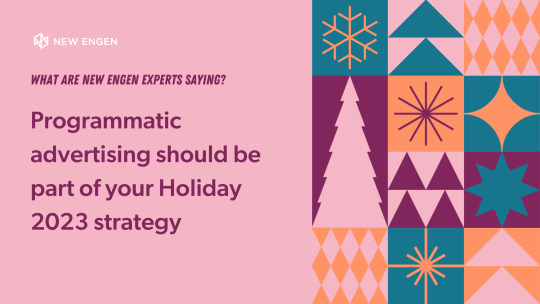
Holiday 2023 Outlook for Consumers and Marketers
Inflation has been on the decline for over a year, and in June it fell to 3% - the lowest rate recorded since March 2021. Coupled with this is a steady rise in consumer confidence, which in June hit a high not seen since early 2022. And even though these trends are a step in the right direction, economic uncertainty is still expected to play a large role in the purchasing decisions being made this holiday season. Price-conscious consumers will look to cut costs by shopping the sale section, using coupons, downsizing holiday celebrations, and simply buying fewer items. With so many brands competing for share of wallet, it won’t be enough to differentiate on price alone. Instead, brands should make a concerted effort to secure share of mind right now so that they are top of mind during the holidays and beyond.
At a high level, the best way to accomplish this is twofold. First, it’s critical to embrace an audience-first, channel-agnostic mindset so that you are reaching the right audience at the right time. Once you’ve found your audience, it’s important to meet them with strong messaging that is centered on brand value. In this article, we make the case for programmatic channels as effective marketing avenues for expanding brand reach and, ultimately, nurturing long-term brand favorability (i.e., when the holidays roll around).
Changing the Narrative on Programmatic Advertising
Let’s start with some housekeeping - when we talk about programmatic, we’re referring to a method for buying ads on specific channels, including Display, Video, Audio, and Digital Out of Home. Within each channel, there are myriad ways to target audiences based on interests, behaviors, device, location, and demographics.
“When you bring up programmatic to a performance marketer, you might see their eyes glaze over - they’re imagining annoying banner ads placed on low-quality inventory that don’t drive results,” says Erin Morningstar, Director of Strategy at New Engen. This attitude is pervasive and, according to Erin, informs the two primary reasons that brands are wary of investing in programmatic advertising: concerns about brand safety and equity, and limitations of measurement. These reservations are understandable, especially if you believe that programmatic is strictly used for generating brand awareness. But Erin explains that "programmatic is more than banner ads or dynamic product retargeting - it’s the turnkey option for accessing the wealth of ad inventory outside of walled gardens and paid search."
Teka Phan, Associate Director at New Engen, adds:
It’s important to understand that programmatic buying is performance buying. It powers actionable insights into how this media drives actions and conversions across the entire marketing funnel.
The reality of digital marketing in 2023 is that brands can’t successfully grow on the Meta-Google duopoly alone (the aforementioned walled gardens). Instead, it’s essential to meet your customers, both existing and prospective, where they are. This begs the question - where are they?
Media Consumption is Changing (Rapidly)
The channel landscape is more diverse than ever, and consumers are increasingly discovering brands through podcasts, in-app ads, and music streaming services. eMarketer predicts that, by 2024, 20% of all time spent consuming digital media will come from audio. What’s more, CTV already constitutes more than 25% of the time consumers spend with digital media, yet accounts for less than 10% of digital ad spending in the US. To put this in context, Meta receives roughly 20% of ad investment despite representing just 7.6% of all digital media consumption.
This is precisely why we, as an agency, believe that brands can win on channels like digital audio, CTV, and yes, even display. It’s true that direct-buying channels are often part of a mature media mix for many brands. But the benefit of embracing a programmatic-first approach is that it allows marketers to keep an eye on performance at scale while maintaining a direct buy approach for branding-first initiatives.
The Benefits of Investing in Programmatic
Thought leaders at New Engen have identified four primary benefits to investing in programmatic:
Control: Despite some preconceived notions, programmatic ad buying affords marketers tighter control over targeting, placements, and optimization. This level of control enables measurement testing in the form of geo holdouts, known audience split tests, and platform lift tools. Such exercises are critical to proving the value of channels outside of last-click.
Flexibility: Budgets can be seamlessly moved around across channels and publishers on a daily or even hourly basis. In contrast, brands buying directly from multiple publishers are beholden to more rigidity driven by campaign minimums and contract terms.
Value at Scale: Not only are CPMs generally cheaper when buying programmatically, but DSPs often provide access to a variety of inventory types, formats, and audiences - in turn, this variation powers the development of diverse, mature programs. The inventory is virtually endless and continuing to grow as more platforms and publishers open their inventory to exchanges.
Actionable Insights: By investing in programmatic activations, brands can quickly gather learnings about what kind of inventory and formats are driving performance. While this may not be a unique function of programmatic channels, it’s differentiated by actionability - “Many people see programmatic as an upper funnel, impression-buy only. The value is that we can measure action (conversions, traffic, etc.) and then act on it in real-time,” Teka explains.
How New Engen Clients Have Found Success With Programmatic
Programmatic buying has driven strong results for New Engen clients, with brands finding synergy between their programmatic programs and other marketing channels, including Paid Search and Social. Below are two New Engen case studies that exemplify the benefits of incorporating programmatic into your marketing mix.
Unlocking Incremental Site Traffic Through CTV
In Q4 of 2022, our client, an outdoor apparel brand, tasked us with driving incremental site traffic through new channels. We first identified CTV as their target audience's top digital destination, then we built three rich consumer segments: in-market for outdoor apparel gear, recent competitor site and store visitors, and recent outdoor equipment purchasers. Ads were served across a variety of CTV platforms like Roku, Hulu, Pluto TV, and the Discovery Channel, and optimized based on insights from real-time incrementality studies.
Under this approach, our exposed audience was 2.5X more likely to visit the brand’s site than our non-exposed audience. What’s more, we achieved a 1.9X lift in checkouts. In other words, the brand was able to reach and capitalize on a more qualified audience through its CTV initiative. To top it all off, we identified a previously under-served audience as a standout performer - a learning that is pivotal to refining the program downstream.
Proving the Revenue Impact of West Marine’s Digital Video Awareness Media
In order to validate the direct revenue impact of digital video awareness media, we designed an audience holdout test for our client, West Marine. We activated precision media buys across CTV and YouTube in Florida, a key growth market for the brand. The audience segments included prospecting, retargeting, and lapsed customers, and were compared against national performance.
By the end of the two-week period, the target audience delivered a 1.7X lift in online lapsed user transactions and a 4.6X lift in in-store transactions. Omnichannel ROAS also improved, and West Marine measured a 1.4X increase in year-over-year omnichannel revenue from new-to-file customers.
Programmatic Advertising Best Practices for Holiday 2023
Whether you're bought into programmatic after reading this or just curious to learn more, we want to leave you with our recommendation for what to do next. Here's what New Engen leaders say are the most important steps to successfully incorporate programmatic into your Holiday 2023 strategy:
First and foremost, set clear objectives
→ Identifying what you want to accomplish and learn from your programmatic initiative is the most important step, as this will inform how to design your program. Before you can drive awareness with a new segment or increase AOV within an existing one, you’ll need to understand your audience - then, you can tailor your channels, targeting, and creative parameters to their specific needs. Once you’re aligned on the plan, stick to it.
Set expectations with your team
→ Know that every channel should have its own goals and benchmarks. Don’t track your programmatic performance against your Paid Search campaigns, because these are inherently different channels and so are their outcomes. Performance will even vary across, Podcast, CTV, and Display given their different mediums.
For example, a consumer who searches for “shoes” is more likely to make an immediate purchase because they are actively searching for the product. Programmatic channels, on the other hand, expose audiences to products before they are ready to purchase. So if that same consumer sees a CTV ad for a pair of shoes before they start their search, there’s a likelihood that they will have been influenced before their final purchase decision.
Launch early
→ We anticipate that the holiday season will stretch across Q4, and consumers will start their holiday planning and shopping early - you want to be there when they’re in the consideration stage. As a rule of thumb, you should be in market at least 4 weeks prior to your peak shopping period.
Anticipate different scenarios
→ As an agency practice, we create decision playbooks with our clients going into critical peak periods that allow our teams to move quickly when optimizing campaigns.
If you’re interested in chatting more about your programmatic strategy for the holidays or beyond, reach out to us at [email protected]. For more holiday insights and digital marketing news, subscribe to our newsletter and follow us on LinkedIn.
#digital marketing#advertising#seo#programmaticadvertising#holiday 2023#marketingstrategy#marketingagency#performance marketing#marketing channels
5 notes
·
View notes
Text
In-Depth Guide on Conversion Paths in GA4 (Google Analytics 4)
Introduction to Conversion Paths in GA4
Google Analytics 4 (GA4) is the latest iteration of Google’s powerful web analytics platform. One of the key features of GA4 is its enhanced focus on user-centric metrics and advanced tracking capabilities. Among these features, understanding and analyzing conversion paths is crucial for businesses looking to optimize their digital marketing efforts.…

View On WordPress
#Analytics Guide#Attribution Analysis#Conversion Optimization#Conversion Paths#Data-driven Decisions#Digital Marketing#Drop-off Rates#Event Tracking#GA4#Google Analytics 4#Marketing Channels#Marketing Strategy#Path Analysis#User Experience#User Journey
0 notes
Text
Unlocking the Power of Digital Marketing: Exploring Different Types
Types of Digital Marketing : In today’s digital age, businesses have a plethora of tools and strategies at their disposal to reach and engage their target audience. Digital marketing has revolutionized the way companies promote their products and services, allowing for precise targeting, measurable results, and enhanced customer interactions. In this blog, we delve into the various types of…

View On WordPress
0 notes
Text
Did You Know? Social Media: A Key Player in Digital Marketing
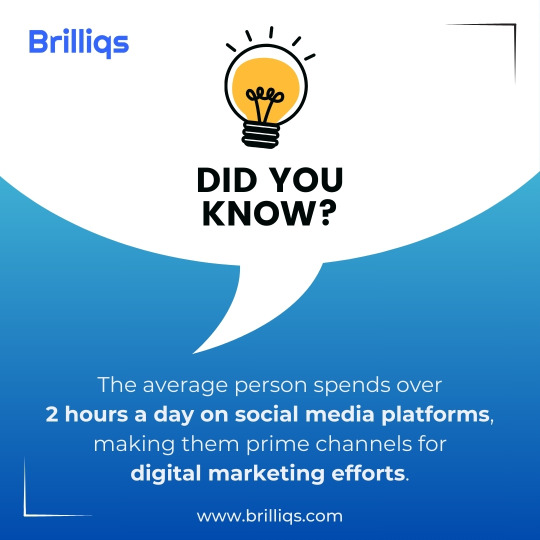
Discover how social media platforms, where the average person spends over 2 hours a day, are crucial for digital marketing efforts. Learn more at Brilliqs - www.brilliqs.com
#Social media marketing#Digital marketing insights#Social media engagement#Marketing channels#Brilliqs
0 notes
Text

Most suitable marketing channels and strategies based on business type
#marketing channels#marketing strategies#digital marketing#internet marketing#seo and online marketing#content marketing#affiliate marketing#social media marketing#blogging
0 notes
Text
How Chance the Rapper Leveraged Technology to Change the Music Industry | by Kabir Virji | Medium


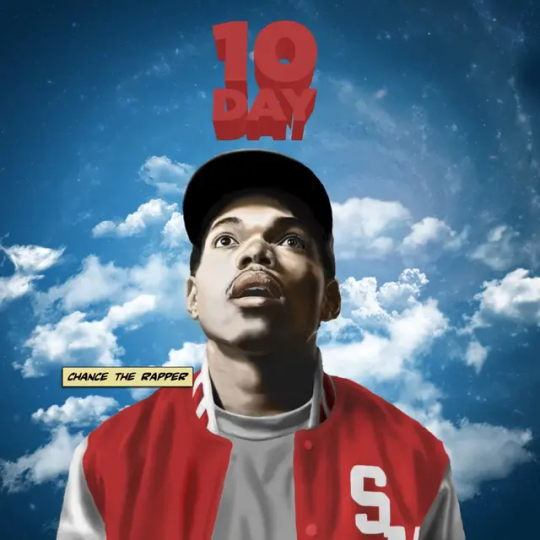



0 notes
Text
What is Digital Marketing?
Digital Marketing is the practice of promoting products or services with the help of digital devices and technology. Digital marketing is also referred as 'online marketing'. Digital marketing began in 1990 and get more used in 2000s. Digital marketing channels can create, accelerate and transmit product value from producer to consumer value through digital networks.

There are different types of Digital marketing channels available namely:
Affiliate marketing
Display advertising
Email marketing
Search engine marketing
Social media marketing
Social networking service
In-game advertising
Online public relations
Video advertising
Content marketing
SMS marketing
Benefits of Digital Marketing
Any information that is needed is accessible at any time or place.
Surpasses internet marketing and also possesses alternatives choices without the internet needed.
Top in presenting beneficial ways and features that reach, inform, engage, offer, and sell services and products to consumers.
Businesses can attain data that present target audiences based on their age, location, interests, and education.
Low investment, the cost per lead is 61% less expensive than traditional marketing.
Able to reach every mobile user, there are over 14 billion worldwide mobile devices and with a projection to grow to almost 18 billion by the year 2024.
1 note
·
View note
Text
Subscribe Digital Paltan on YouTube for Digital marketing
#youtube video#youtube#youtube channel#digitalmarketing#marketingblog#marketingvideo#marketing channels#viralvideos
0 notes
Text
https://www.businessupside.in/what-are-some-of-the-best-software-for-logo-design/
Logo design software is a tool that may be used offline or online to generate logo designs using brand colors, and the brand or user gives a broad shape. Of course, good logo design software should support responsive logos. Responsive logos can be updated for various creative materials and marketing channels, depending on the brand’s needs and evolution. Vector-based design software is the greatest option for logo design software.
#Logo design software#Marketing channels#Economical design and branding#DesignCrowd#Adobe Illustrator#CorelDRAW
1 note
·
View note
Text

Learn the Marketing Channels Meaning
A product is going into the marketplace via a couple of advertising and marketing channels. The manner of going from a product from the producer to the store is referred to as distribution channels.
Read the marketing channels meaning and learn how they play a key role in marketing with their distribution approach.
Read here- https://sommarketer.com/a-guide-to-marketing-channels-meaning-learn-the-marketing-channels-their-importance/
0 notes
Text
Marketing of BT Cotton in Different Marketing Channels in Manchirial District, Telangana
The current study was carried out in Telangana's Manchirial district. Telangana produces the most BT cotton in the nation, yet this state also has several challenges and limitations in its cotton industry. Weather changes and price swings were the main issues that cotton growers had to deal with. Additionally, the farmer is forced to sell cotton at a loss due to a lack of preservation methods, transportation, and labour. One block has been specifically chosen for the current study out of all the blocks in the Manchirial district due to its large total area and BT cotton production. Farmers who are planting BT Cotton are gathered by the Village Agriculture Assistant (VAA) and chosen at random from the group. Produce was sold in the greatest volume through channel I, and in a comparable way, the least amount was sold through channels III and II. Channel III had the largest producer share in consumer price—84.97%—compared to Channel I's 84.64% and Channel II's 83.85%. Channel I had the biggest price spread, at RS 1168/qtl, compared to Channel II's and Channel III's, at RS 1037/qtl and 1010, respectively. Channel III had the best marketing efficiency, 6.65%, compared to channel II's 6.19% and channel III's 6.51%.
See the link here: journalajaees.com
0 notes
Link
Marketing channel is a system which ensures the distribution of the merchandise from the producer to the consumers by passing it through multiple levels. To know more follow this shared presentation.
0 notes
Text
everybody suddenly becoming video production experts and business majors overnight just to stick it to some internet guys was truly bizarre
#i honestly believe this was bad marketing and bad pr#and too drastic of a change for their channel#but people suddenly knowing what’s best for them? idk guys#watcher#watcher entertainment
117 notes
·
View notes
Text
Honestly, the only song Käärijä should write in English, is a song about the pressures of singing in English to be 'more accessible'.
But write it in Finnish, put it through Google Translate and use that with no adjustments.
Call it - International Success
#käärijä#I'm really glad he said immediately that he's not gonna start performing in English#it's not what he does or is good at#like no disrespect to artists who do that#like Blind Channel but that was a conscious choice of theirs from the beginning#but the pressure to be “internationally marketable” is fucking dumb as a concept tbh
213 notes
·
View notes
